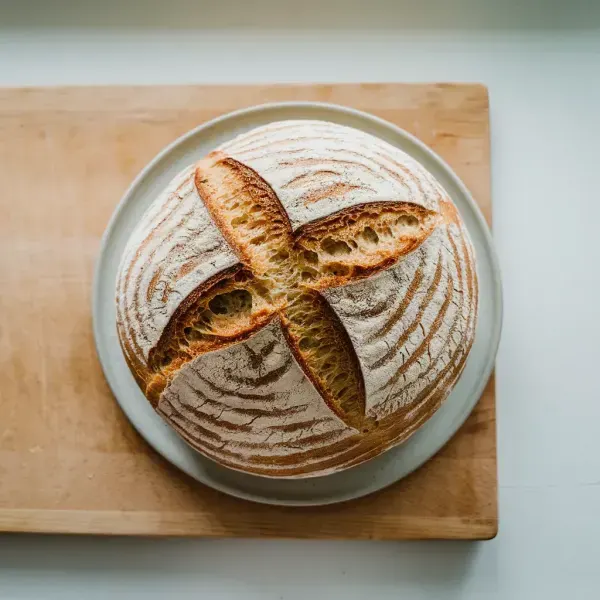
 325 minutes
325 minutesA quick and easy recipe for rustic no-knead bread that requires minimal effort and provides delicious results.


cups
Instant Yeast
packets
teaspoons
Water, lukewarm
cups
1. Mix Dry Ingredients and Water
Whisk together the bread flour, instant yeast, and salt in a large bowl. Pour in the water gradually until a rough, shaggy dough forms. Do not overmix, as the dough should be rustic. Cover with plastic wrap and let it rest at room temperature for 4 hours.
2. Fold the Dough
After the dough has doubled in size and shows a bubbly surface, gently turn it out onto a lightly floured work surface. Fold the dough over onto itself a couple of times, then let it rest for another 30 minutes.
3. Preheat the Oven and Pot
Preheat the oven to 450 degrees and place a 6-to-8-quart heavy covered pot inside to heat up. This will become the cooking environment for the bread.
4. Bake the Bread
Carefully place the dough seam side up into the preheated pot. Cover with the lid and bake for 30 minutes. Then, remove the lid and bake for another 15 to 30 minutes until the crust is golden brown and sounds hollow when tapped.
5. Cool the Bread
Remove the bread from the oven and place it on a rack to cool completely before slicing. This allows the interior to finish cooking and set properly.
The high hydration level of this dough is key to achieving the bread's open crumb and crispy crust. Ensure that you measure your ingredients accurately, preferably using a digital scale. This will help you maintain the right balance between flour and water.
Opt for high-quality flour, preferably bread flour, which has a higher protein content and will give your bread structure and a chewy texture. Additionally, use sea salt rather than table salt for a more nuanced flavor.
Baking in a pre-heated Dutch oven traps steam, essential for developing the bread’s crust. Make sure your Dutch oven is very hot before you place the dough inside, and keep the lid on for the first 20 minutes of baking to maximize that steam effect.
If time allows, refrigerate your dough for 12-24 hours after the initial rise. This slow fermentation develops deep, complex flavors thanks to the lactobacilli and wild yeasts that proliferate over a longer period.
Baking in a pre-heated Dutch oven traps steam, essential for developing the bread’s crust. Make sure your Dutch oven is very hot before you place the dough inside, and keep the lid on for the first 20 minutes of baking to maximize that steam effect.




Comments (0)